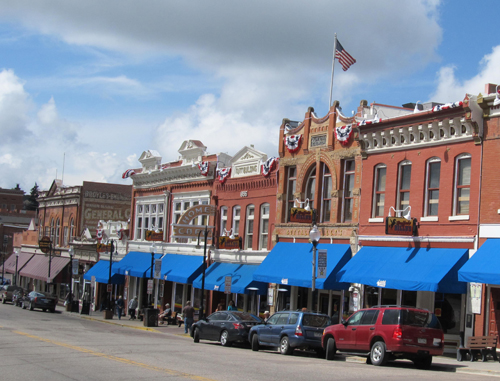Tuesday, July 01 2014
Like most gold regions that boomed in the 1800s, Colorado’s Cripple Creek Mining District came from humble beginnings. Little more than cattle roamed the high valleys perched nearly two miles above sea level, and prior to ranching, generations of Ute Indians had lived off the land. But unlike most boomtowns, the gold never completely ran out here, and it continues to be mined successfully today. Historically, the Cripple Creek Mining District has produced over 24 million troy ounces of gold, along with some silver. That amount exceeds the combined production of the California and Alaska Gold Rushes! The millions made from 1891 through the present has earned it the distinction of “The World’s Greatest Gold Camp.” Today, the district is not only filled with gold rush era buildings and mining relics, but you can also tour real mines, visit interesting museums, ride the rails of a narrow gauge train, hike and bike while admiring mountain scenery, and even gamble on Lady Luck at the casinos. Pikes Peak Gold RushThe Pikes Peak Gold Rush officially began in 1859, a decade after the California Gold Rush. At that time, the land was still part of the Kansas Territory. The first color was actually found a few years earlier in 1850 at the confluence of Ralston and Clear Creeks, but John Ralston was California-bound, so the shiny stuff stayed where it lay… for a while. Several prospecting parties returned to Ralston Creek in 1858 and 1859, but didn’t find much. In fact, many were so discouraged that they didn’t stick around. The dedicated prospectors who persevered referred to those who gave up as the “Go Backers.” Soon enough, though, a few productive placer deposits were found along the South Platte River at the base of the mountains, the canyon of Clear Creek in the mountains west of Golden, and South Park. Word spread of these glittering discoveries, and “Pikes Peak or Bust” became a popular mantra. During the next several years, 100,000 gold-seekers headed for Colorado; 50,000 completed the journey; half of those became “Go Backers” and the remaining 25,000 turned a territory into a state in 1876. Cripple Creek Gold RushMost of the initial easy-to-reach gold deposits were largely played out by 1863, but then ranch hand Robert Womack started an even bigger gold rush. He found the shiny stuff in Cripple Creek in 1890, causing thousands of prospectors to head to the southwest slopes of Pikes Peak. Sadly, Womack died penniless several years later, even though his El Paso claim, which he sold for $500 and a bottle of liquor, produced millions of dollars in gold for the buyer. Between 1894 and 1917, over 500 mines operated in the Cripple Creek Mining District, which also included the thriving town of Victor. Headframes and other relics from many of those historic mines have been preserved, so it’s easy to get a good look up close. Perhaps one of the reasons it took 30 years for gold to be found in Cripple Creek following the state’s first gold rush is because no one expected gold, especially not millions of ounces, to be in this area. Most of the old-timers’ theories about how to locate gold just didn’t hold up here. Modern geologists know that areas that were highly volcanic in prehistoric times, are likely places to create rich underground deposits. The six square miles that comprise the Cripple Creek & Victor Mining District are located in the caldera of an extinct volcano. From what one frustrated miner wrote in Cripple Creek Illustrated, some early prospectors were stumped by the gold in this region: “Geographically, Cripple Creek is a freak. It is erratic, eccentric, and full of whims and caprices. That is, it is so to the man of science and the miner of experience. It is a vast crater bed in which the elements once were wont to make merry with nature and play unexpected pranks… The veins run here, there, and everywhere, cutting in all directions and even violating the theory that to have real value the vein should strike toward the poles of the earth.,, the experience has been that the deeper down into the earth the shafts penetrate, the richer is the ore, and the wider, more solid, and enduring the deposits.” Comments:
|






